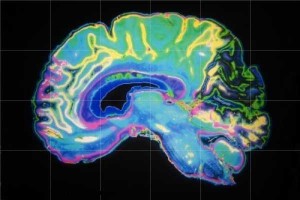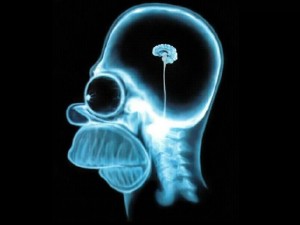Brrrrrains!
beautiful, cello, funny, pictures, true January 4th, 2011Earlier today, I heard someone mention the phrase, “We only use ten percent of our brains,” and that got me thinking of a number of reasons why that statement isn’t true. First of all, most human beings are very highly evolved, and every part of our bodies (with the possible exception of the coccyx) has a specific function and purpose. Things that don’t serve any purpose get evolutionarily ‘weeded out’, you might say, and tens of thousands of years of that process have left us pretty dang streamlined.
Different brain functions are handled by different sections of the brain, so while at this very second you may be using only ten percent of yours by watching television, or by having sex, or by reading this blog, you’ll be using different parts of it to know where your limbs are (without looking), or to recognize your childrens’ faces, or to simply keep your balance, or to recognize subtle social cues, or to play the cello. You’ll have used your entire brain in just a few minutes without even, dare I say, thinking about it.
Where did the ten-percent myth originate, and why does it persist? According to Barry Beyerstein, it seems to be a skewed modern outgrowth of an idea put forth by Victorian-era psychologist William James, who was fond of saying that people rarely achieve more than a small amount of their potential. From there, the idea spread into the public vernacular, where it somehow morphed into ‘ten percent of their potential’, and then into ten percent of the brain. Once that meme spread out across the world, it never really went away, despite the enormous scientific and technological breakthroughs on the subject during the intervening decades.
I love to find out about the modern discoveries that prove how ‘plastic’ and changeable the brain is, especially following a brain injury. If you lose your sight, for example, your brain will learn to process things you TOUCH with the visual cortex. A friend of mine used to have a little blind cat who knew her way around the entire house, could walk right over to you wherever you were, could jump to window sills (and even knew which window sills had decorative stuff in them she needed to avoid, or were sills that she was unable to jump to), and could even climb up and down the fire escape without ever missing a step. My own cat, who had normal vision, wouldn’t go near the steps of the fire escape because she could see how steep the angle was, and how high up our third-floor apartment really was, and it was all too much for her. The blind cat would run up and down without a care in the world. She had the place completely mapped out in her brain, and knew exactly where everything was.
The ten-percent theory seems to rank up there with other misinformed phrases like ‘sweat like a pig’ and ‘eat like a bird.’ Pigs don’t sweat, which is why they lie around in the mud to keep cool, and birds have to eat twice their own weight every day in order to have enough energy for all that flying. My favorite thing to say, when someone says they eat like a bird, is, “Oh, really? Twice your own weight every day? Or do you mean you peck at the food on your plate, without using your hands or utensils?”
The good news, possibly the most heartening of all about the brain theory, is that if you DO only use ten percent of your brain, but you use it to think about THE Brain, that should bump you up to at least a good fifteen or twenty percent right there.






